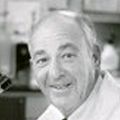Forensic Pathology, From Crime Scene to Courtroom: Evidence to Testimony
Every day in America nearly seven thousand people die. That’s about two and a half million deaths per year. When a death is violent, unexpected, medically unattended, or suspicious – which occurs in about one-quarter to one-third of cases – it becomes necessary to determine whether the death was due to foul play. A specially trained physician, known as medical examiner or forensic pathologist, is asked to perform an autopsy to inspect the body externally and internally, and to issue a report that can close or open it to the legal system for criminal prosecution. Despite the many death cases to probe, fewer than five hundred forensic pathologists are trained and certified in the U.S.
A. Suspected Crime Scene Investigation
- Forensic Pathologist
- Criminalist
- Forensic Photographer
- Homicide Detective
B. Identification, Collection, and Preservation of Evidence
C. Performance of Autopsy by Forensic Pathologist Gross and Microscopic Examination of Body Organs and Tissues Autopsy Photographs Collection of relevant biological specimens for toxicological analysis and other studies
D. Correlation of Autopsy Findings with Medical Records, and Police Investigative Reports
E. Completion of Post-Mortem Protocol
Assessing the manner of death is the next step for the forensic pathologist, who selects one of five choices: homicide, suicide, accident, natural, or undetermined. This declaration is prominently displayed on the autopsy report and becomes part of the official record that family members, and often the news media, have access to. While it may take a few weeks for all the test results to come in, the autopsy doctor may share preliminary information with law enforcement, even though the office of the medical examiner should wholly independent from police and prosecutors. Letting authorities know that someone died at the hands of another person ensures public safety by allowing a criminal investigation to be started swiftly. If someone is arrested for murder, prosecutors and defense attorneys will receive the completed autopsy information prior to the defendant’s trial, and the forensic pathologist will be a critical witness in the courtroom.
Learning Objectives:
1. To understand what official medicolegal investigation is about
2. Identify how these procedures are accomplished




